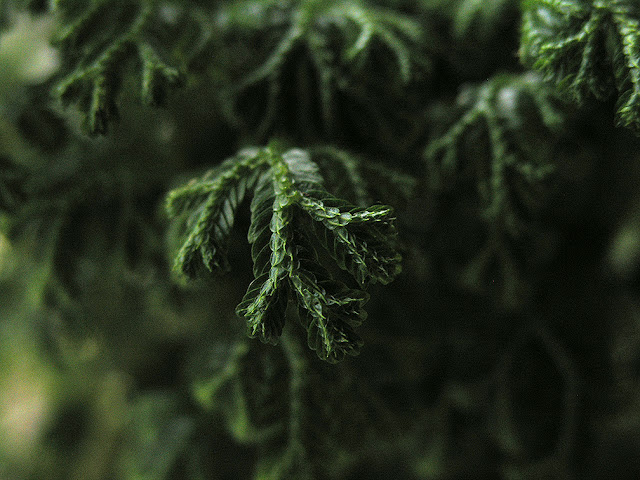 |
| New tree: deciduous Magnolia 'Butterflies' |
|
|
The fall weather has been so pleasant recently that it's allowed me to continue expanding my garden, while taking advantage of the great sales to be found at this time of the year when nurseries are trying to clear out all their stock.
Springtime Garden Center had two nice-size deciduous magnolias of a new variety named 'Butterflies' with yellow flowers, and it was impossible to resist. I'd been wanting a magnolia for some time, so I bought the best-looking one of the two and made arrangements to have them plant it for me, which they did this past week.
 |
| New boundary flower bed |
During previous weekends I'd been working on consolidating the three plants I had at our eastern property boundary into one larger continuous bed. I put in one of the Japanese maple seedlings gleaned from the grounds of the office building next door to where I work. This will eventually shade the Rhododendron I had planted there a couple of years ago. I added two divisions of the Gazanias from another bed, a yellow-twig dogwood (
Cornus sanguinea 'Artic Sun') and a Pieris shrub. The Silky Thread grass (
Nassella tenuissima) that wasn't doing well in the back I transplanted here, adding a few bulbs of Blue Squill to fill it out. We'll see how this bed looks over the next year as the plants grow.
 |
| Gordlinia grandiflora |
Beyond this bed I planted another irresistible bargain found at Wayside Gardens:
Gordlinia grandiflora is a hyrbid of the famous Ben Franklin tree (
Franklinia alatamaha) and the well-known Loblolly Bay (
Gordonia lassianthus) of southern forests. Like the Franklinia, Gordlinia blooms in the fall as the foliage turns red, and it's supposed to be evergreen. We'll see if it lives up to that claim in these latitudes.
 |
| Bed with evergreens on east side of house (Gazanias in front) |
I finally decided upon what I think is the right spot for the ferny-leaved cypress (
Chamaecyparis obtusa filicoides) I bought last spring. This meant moving the lovely dwarf blue spruce I'd planted under the bay window to the other side of the Golden Hinoki cypress, and moving the Floxglove that was there to another bed. Fortunately, herbaceous perennials are easy to transplant, and the spruce had only been growing for one season, but I think the combination of foliage colors looks better in the new arrangement.
Herb kids me about transplanting and moving plants so frequently, as if it was as easy as rearranging furniture, but it's really not that much different. If it improves the overall look and the plants were not prospering where they were, why not?
 |
| Front yard from the east, construction of new houses in the background |











































